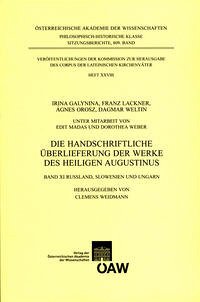Nicht lieferbar

Die Handschriftliche Uberlieferung der Werke des Heiligen Augustinus. Band XI Russland, Slowenien und Ungarn (Veroffentlichungen der Kommission zur Herausgabe des Corpus der Lateinischen Kirchenvater, Heft XXVIII)
Versandkostenfrei!
Nicht lieferbar
Die Handschriftliche Uberlieferung der Werke des Heiligen Augustinus. Band XI Russland, Slowenien und Ungarn (Veroffentlichungen der Kommission zur Herausgabe des Corpus der Lateinischen Kirchenvater, Heft XXVIII)




